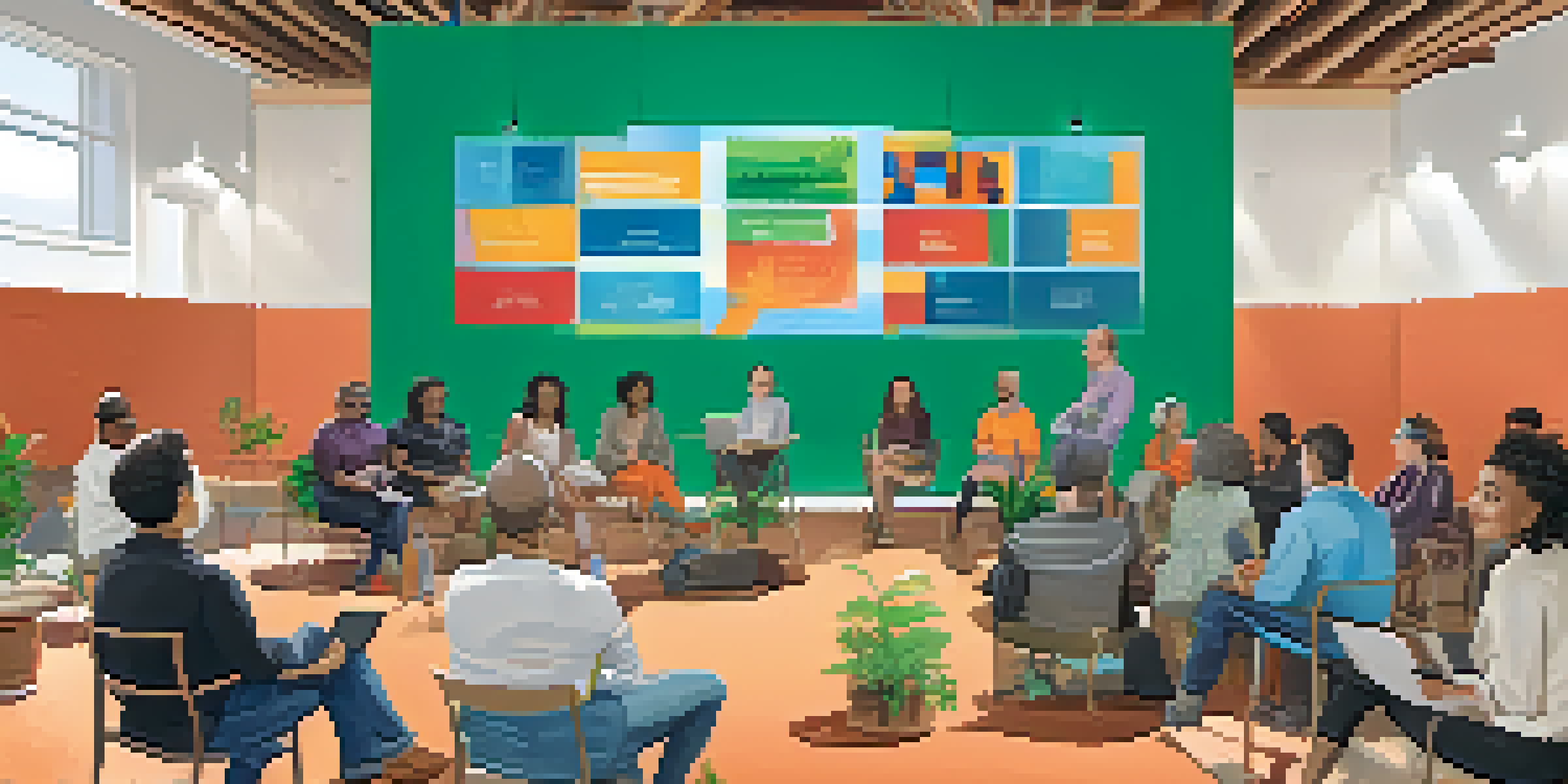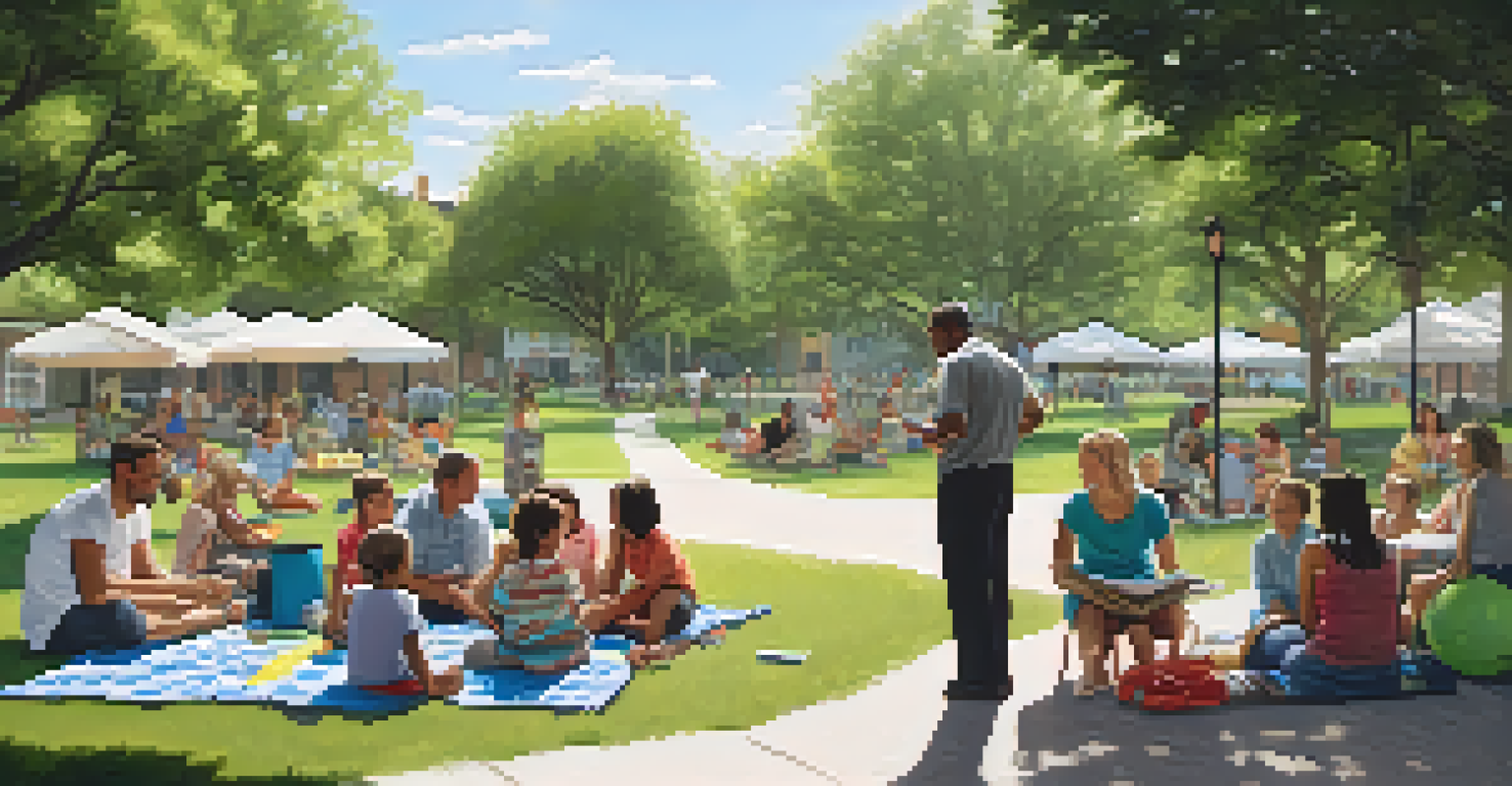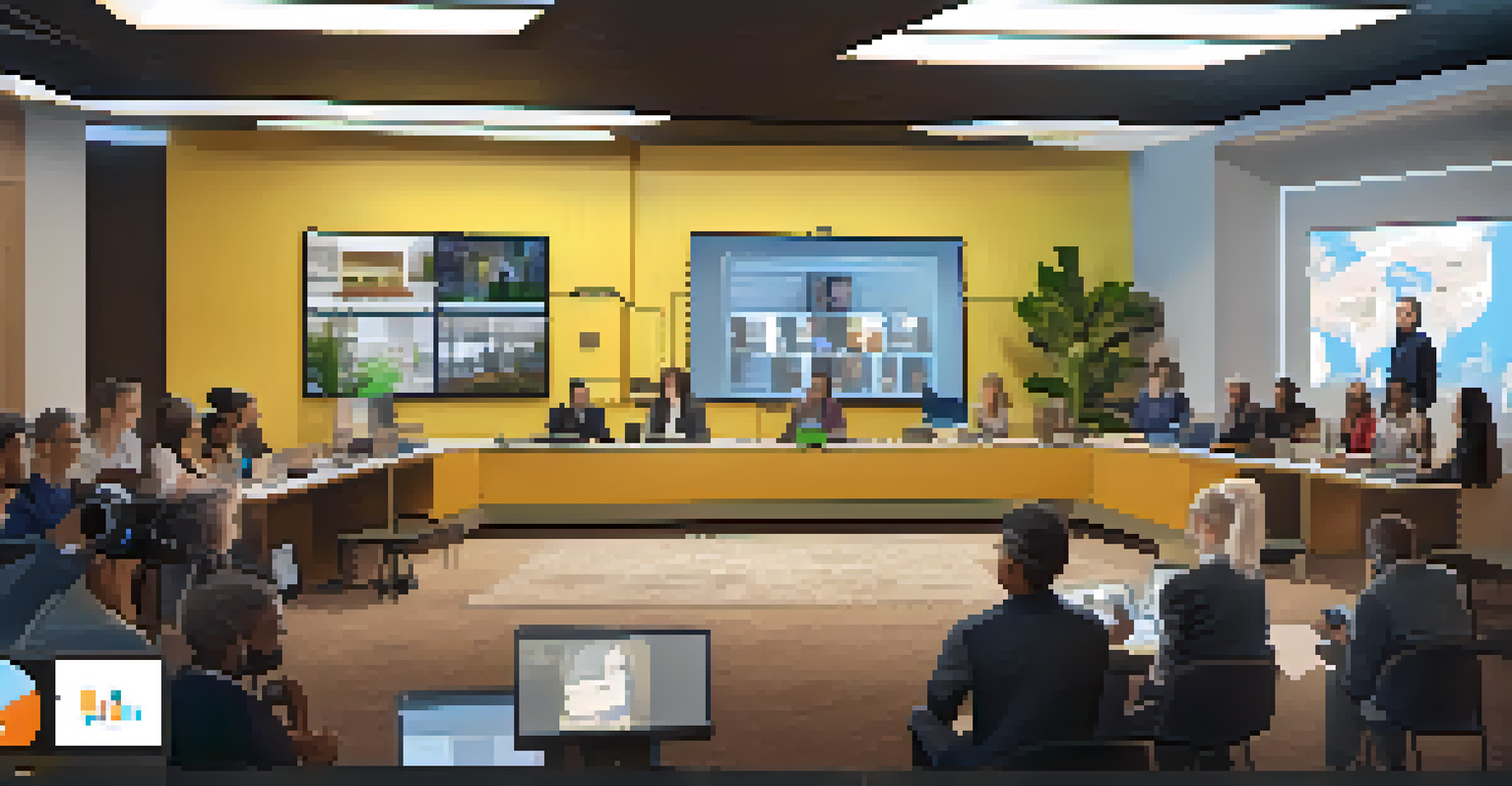The Role of Public Meetings in Austin's Urban Planning Process

Understanding Urban Planning in Austin
Urban planning in Austin is a complex process that involves various stakeholders, including government officials, developers, and the community. The goal is to create a sustainable and livable environment that meets the needs of residents. This process includes zoning laws, transportation planning, and land use decisions, which are all critical for the city's growth and development.
A city is not an accident but the result of coherent visions and aims.
In Austin, rapid population growth has intensified the need for effective urban planning. As more people move to the city, the demand for housing, transportation, and public spaces increases. Therefore, engaging the community in this process becomes essential to ensure that development aligns with residents' needs and expectations.
Public meetings serve as a platform for discussion, allowing citizens to voice their opinions and concerns. This feedback is invaluable, helping city planners make informed decisions that reflect the community's desires and values.
The Importance of Public Meetings
Public meetings in Austin play a crucial role in the urban planning process by fostering transparency and accountability. These gatherings provide an opportunity for residents to learn about proposed projects and express their views. When people feel their voices are heard, trust in local government increases, leading to more collaborative planning efforts.

Moreover, these meetings can serve as a forum for education, where community members can gain insights into the planning process and the rationale behind specific decisions. By demystifying urban planning, residents become more informed and engaged, promoting a healthier civic dialogue.
Community Engagement is Crucial
Engaging the community in urban planning ensures that development aligns with residents' needs and expectations.
Ultimately, public meetings bridge the gap between planners and residents, ensuring that urban development is not just top-down but rather a collaborative endeavor. This inclusivity helps build a sense of community and ownership over the city's future.
Types of Public Meetings in Austin
In Austin, public meetings take various forms, including neighborhood meetings, city council sessions, and workshops. Each type offers different levels of engagement, from informal discussions to formal presentations. Neighborhood meetings, for example, allow residents to gather in smaller settings to discuss local issues, while city council sessions address broader topics affecting the entire city.
The future of our cities will be determined by the decisions we make today about the places we live, work, and play.
Workshops often involve interactive components, encouraging participants to brainstorm and collaborate on solutions to specific challenges. These formats can help generate creative ideas and foster a sense of teamwork among participants, making the planning process feel more inclusive.
Regardless of the format, the common thread is community involvement. Each meeting type is designed to facilitate dialogue and ensure that urban planning reflects the diverse voices of Austin's residents.
Challenges Faced in Public Meetings
Despite their importance, public meetings in Austin can face several challenges. One of the main issues is ensuring adequate participation, particularly from underrepresented communities. Factors such as language barriers, socioeconomic status, and accessibility can hinder some residents from voicing their opinions.
Additionally, the sheer volume of information presented during these meetings can be overwhelming for attendees. When residents struggle to understand complex planning concepts or technical jargon, they may disengage from the process, leading to a less inclusive discussion.
Public Meetings Foster Trust
Public meetings provide a platform for residents to voice their opinions, increasing transparency and trust in local government.
To address these challenges, city planners must strive to create an inviting atmosphere that encourages participation. This can include offering translation services, simplifying information, and hosting meetings at convenient times and locations to reach a wider audience.
How Feedback Shapes Urban Planning
Feedback gathered during public meetings is instrumental in shaping Austin's urban planning decisions. Planners analyze the input received to identify community priorities and concerns, which can lead to adjustments in proposed projects. For instance, if a significant number of residents express worries about traffic congestion, planners may propose additional infrastructure improvements.
Moreover, community feedback can help identify potential pitfalls before projects are finalized. By addressing concerns early in the planning process, the city can mitigate opposition and foster a more cohesive development strategy.
The iterative nature of incorporating public feedback not only enhances the quality of urban planning but also strengthens the relationship between city officials and residents. When community members see their suggestions reflected in plans, they are more likely to support and engage with future initiatives.
The Role of Technology in Public Meetings
Technology has significantly transformed how public meetings are conducted in Austin. With the rise of virtual meetings, residents can now participate from the comfort of their homes, removing geographical barriers. This shift has the potential to increase attendance and broaden community engagement, especially for those who may have previously found it difficult to attend in-person meetings.
Additionally, online platforms allow for interactive elements such as polls, Q&A sessions, and live chats, creating a more dynamic experience. This not only makes meetings more engaging but also allows planners to gather real-time feedback from participants.
Technology Enhances Participation
The use of technology in public meetings facilitates broader community engagement by allowing residents to participate from home.
However, while technology opens up new avenues for participation, it also presents challenges, such as ensuring digital accessibility. As the city continues to embrace technology, it's crucial to strike a balance that maintains inclusivity while leveraging the benefits of digital tools.
Building Community Through Public Meetings
Public meetings are more than just a means for gathering opinions; they are an opportunity to build community. When residents come together to discuss urban planning, they share stories, experiences, and ideas that can lead to stronger neighborhood bonds. This sense of community can foster collaboration beyond meetings, empowering residents to take an active role in shaping their environment.
Additionally, these gatherings can help cultivate a shared vision for the future of Austin. As diverse voices come together, they create a richer dialogue that reflects the city's unique character. This collective approach can lead to more innovative solutions that address the varied needs of the community.

In essence, public meetings are a vital part of the urban planning process that not only informs development but also strengthens the community fabric. By engaging with one another, residents can feel more connected to their city and invested in its future.